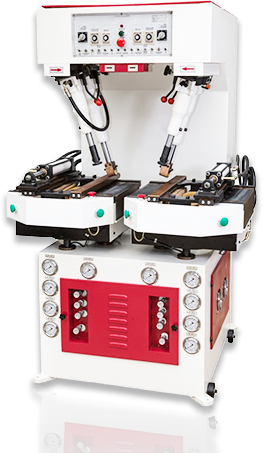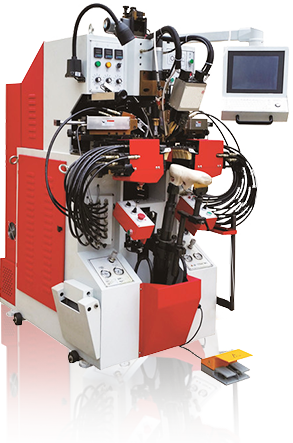Luggage refers to a bag, bag or box that is used to accommodate the items carried by individuals for travel. Luggage products can be divided into four levels according to their functions, processes and design standards. The basic luggage product function is to accommodate and carry. The price is below 350 yuan, which belongs to the category of daily necessities. The durability and practicality of such products are the primary considerations for consumers to buy. Mid-range luggage products have decorative attributes on the basis of low-end luggage products, which can reflect consumers' aesthetics and personality. The price ranges from 350 to 750 yuan. High-end luggage products have higher requirements on brand, materials and design, with prices ranging from 750 yuan to 2500 yuan. More high-end luggage products belong to the category of luxury goods with prices above 2500 RMB. These products highlight the identity and status of the owner. Their brands, materials and designs need to be fully recognized in the fashion industry.
Later, the Chinese luggage industry developed rapidly
After China's modern luggage industry started after the founding of the People's Republic of China, the development of the industry is roughly divided into three stages. The first stage is from 1949 to 1978, which is the budding stage. Luggage products are mainly produced by state-owned manufacturers, distributed and sold by state-owned units, and the materials used for the products are mainly canvas and artificial leather. The second stage is from 1978 to 2000, which is the initial stage. Restricted by the level of science and technology, "three come with one supplement", that is, processing of incoming materials, processing of incoming samples, assembly of incoming parts, and compensation trade, has become a popular business model for luggage manufacturers at this stage. The third stage is from 2000 to the present, which is a stage of rapid development. Consumer demands for luggage have been upgraded from traditional functionality to both function and design.
Consumption upgrade accelerates, the luggage market has great potential
The increase in the scale of the luggage industry is driven by the wave of consumption upgrades. At this stage, the reasons for the expansion of the market scale of the luggage industry mainly include three points. ① From an economic perspective, the steady growth of China's GDP highlights the economic activity. The increase in economic activity promotes the growth of business travel demand. The increase in residents' income promotes the fiery domestic and foreign tourism market, and promotes the business luggage and travel luggage categories. Demand growth. ②During the process of consumption upgrade, consumers' requirements for products are also increasing. Travel, leisure and business categories of bags need to be differentiated for various use scenarios, which promotes the increase and refinement of the types of bags and products, and promotes professionalism. The development of the category luggage market accelerates the elimination and updating of luggage products in an active market environment. ③As residents' disposable income continues to grow, and their health awareness continues to increase, outdoor sports have become a popular healthy lifestyle. Outdoor sports related equipment such as sports bags have been popular, driving the growth of sports bags sales.
In the long run, China's luggage market has huge room for growth. In 2015, China's per capita luggage expenditure was only 10% of the same period in the United States. The Chinese market is still in a period of growth, and the growth of the market scale is sustainable. According to Sullivan data, the total size of China's luggage market in 2017 was 185.9 billion yuan. Under the catalytic role of consumption upgrading at this stage, the future size of China's luggage market is expected to continue to accelerate and further expand.
Connect upstream and downstream, omni-channel layout
The upstream of the luggage industry chain is a supplier of raw materials such as leather, plastics, fabrics, hardware accessories, etc., which belongs to the traditional industry and the competition is fierce; Midstream is a manufacturer of luggage, which is mainly divided into OEM and ODM type manufacturers, lacking independence Brand; downstream is the sales terminal, including retail brands, supermarkets, department stores, e-commerce platforms and wholesale markets. Due to the positioning of Chinese luggage companies in the low-end market, the sales channels that can be deployed are limited, mainly in e-commerce platforms and wholesale markets. With the further development of China's luggage industry, there will be more and more independent retail brands in China. In the future, it will focus more on R&D design, marketing promotion and sales channel layout.
Strong tourism demand, promoting the development of luggage industry
As an important industry in China's national economy, tourism has maintained a steady growth trend, and China's total domestic tourism expenditure has increased year by year, from 2.6 trillion yuan in 2013 to 4.6 trillion yuan in 2017.
In addition, the number of Chinese tourists has also increased steadily in the past five years, from 3.26 billion in 2013 to 5.0 billion in 2017. With the continuous improvement of national consumption capacity, tourism has become an indispensable part of national life. With the continuous upgrade of the national consumption concept and tourism concept, the national demand for tourism products and services has gradually shown a trend of quality and high-end.
The strong demand for tourism will definitely stimulate consumers' consumption in market segments such as travel bags and bags, and will also put forward more differentiated requirements in terms of the functionality, fashion and portability of bags and bags. In line with the general trend of personalized and mid- to high-end tourism development, luggage brands will continue to innovate and design better and more suitable travel equipment for tourists.
The rapid development of outdoor sports stimulates the consumption of luggage
China's outdoor sports development space is large, and the development of the outdoor sports industry will stimulate the growth of consumer demand for outdoor products, including leisure bags, which in turn will drive the development of the luggage, especially the leisure luggage industry. Outdoor sports have a broad space for development, mainly due to national policy support, the growth of national consumption capacity, and the promotion of national outdoor sports awareness.
In terms of national policies, China has issued a series of favorable policies to encourage the vigorous development of outdoor leisure and fitness activities from the perspective of sports tourism and outdoor equipment. In August 2015, the State Council promulgated "Several Opinions on Further Promoting Tourism Investment and Consumption", proposing to cultivate various outdoor products with independent brands such as leisure, mountaineering, skiing, diving, camping, and adventure, and increase the consumption of outdoor products.
The economic capacity of Chinese residents has gradually improved. Data from the National Bureau of Statistics shows that per capita disposable income has increased year by year since 2013, and citizens’ awareness of sports, fitness, and outdoor activities has gradually strengthened. At the same time, income levels have also increased for fitness, outdoor The consumption of sporting goods provides more financial support.
China's outdoor sports started late. Compared with the United States and Europe, where outdoor sports are more popular, China's outdoor sports industry still has huge room for development. With the development of the outdoor sports industry, consumer demand for outdoor leisure products including professional equipment and leisure bags will also increase, and the release of this demand will promote the development of the leisure luggage and bag industry.
Future development: personalization, intelligence, channel e-commerce
In the context of consumption upgrades, consumer demand for luggage has shown a personalized trend. The personalized elements of luggage are reflected in many aspects, such as appearance design, theme design, color matching, pattern layout, opening method and so on. Designing individualized and unique luggage helps companies extend product lines, increase user coverage, and increase sales. In addition, with the rise of young consumer groups, their self-expression and trendy aesthetic ideas will be reflected in the demand for novel and fashionable product design, and the personalization of luggage perfectly matches this trend of consumption trends.
While taking into account both functionality and fashion, the luggage industry will gradually become intelligent in the future. Smart bags provide some practical functions through electronic sensors, such as the anti-loss function based on Bluetooth technology and the weighing function based on gravity sensors. Intelligentization is a new direction for the development of the luggage industry and an important development trend. In the context of the smart era such as "Internet+" and "Internet of Things", luggage with smart elements and accessories can better interconnect with terminals such as mobile phones, realize information interaction, data recording, etc., which is convenient for users to use.
China's luggage industry has a long industrial chain and many circulation links. The emergence of e-commerce has broadened sales channels and revolutionized the business model of luggage companies. E-commerce reduces transaction costs, consumers can directly contact new products, new brands, and can quickly buy bags of different brands, and luggage companies can conduct product introduction, promotion, and sales through the Internet, shortening the circulation and transaction links, and improving For efficiency. As e-commerce and related platform operation models become increasingly mature, operating costs will continue to decrease, and e-commerce in the luggage industry will be the general trend.
Dr. Wang Xin, Sullivan Global Partner, Vice President of Global Market Strategic Planning and President of China, pointed out that the luggage industry has a significant brand effect. China's domestic luggage products are concentrated in the low-end market, with weak brand influence and low unit prices. . In the context of consumption upgrades, consumers are paying more attention to the product quality and brand awareness of luggage, and the personalized and intelligent mid-to-high-end luggage market has great development potential.







